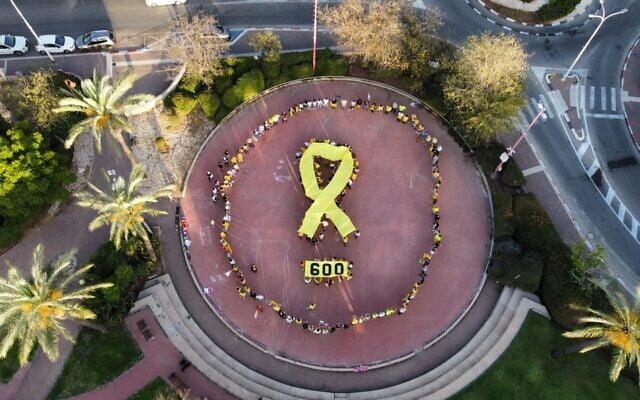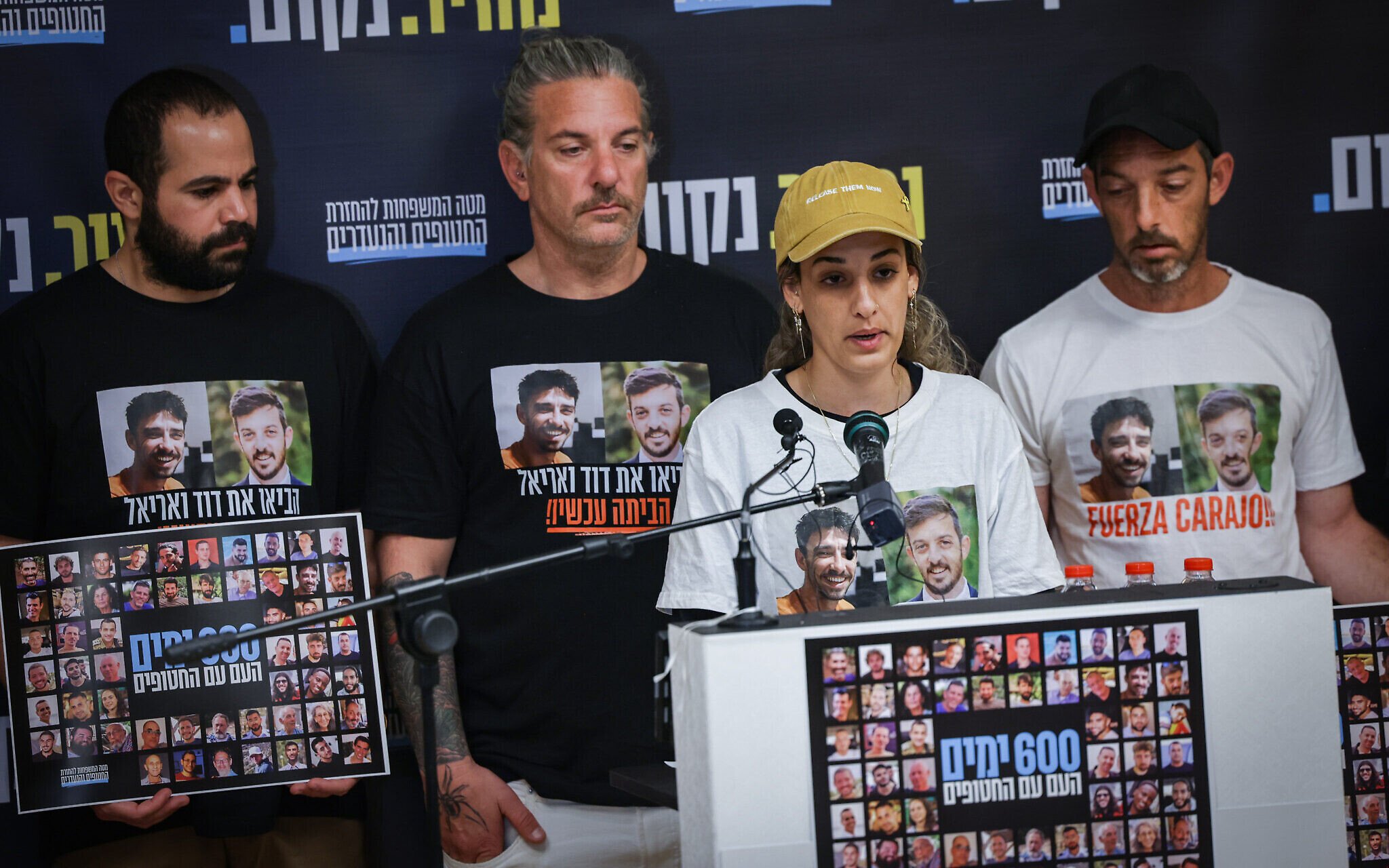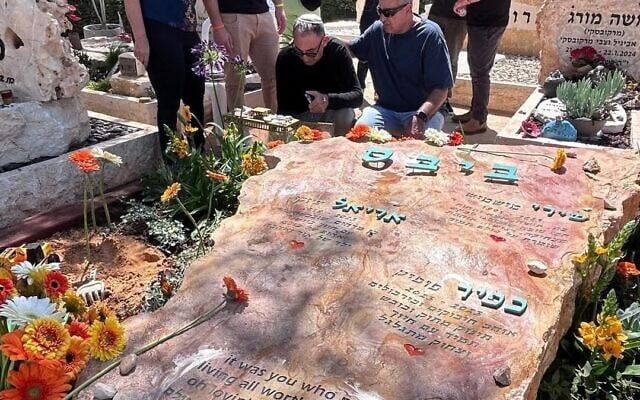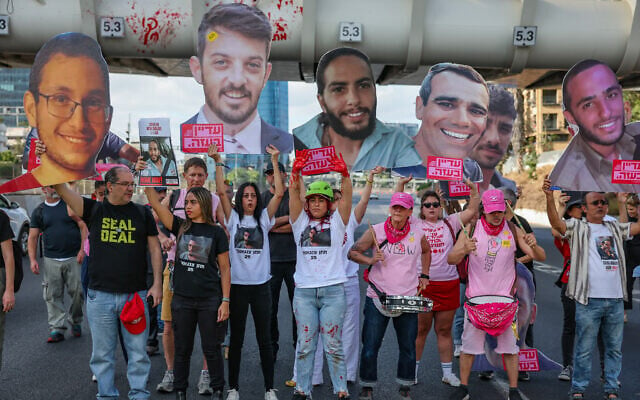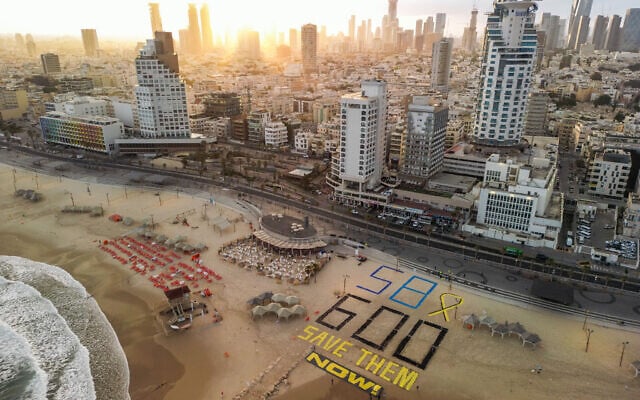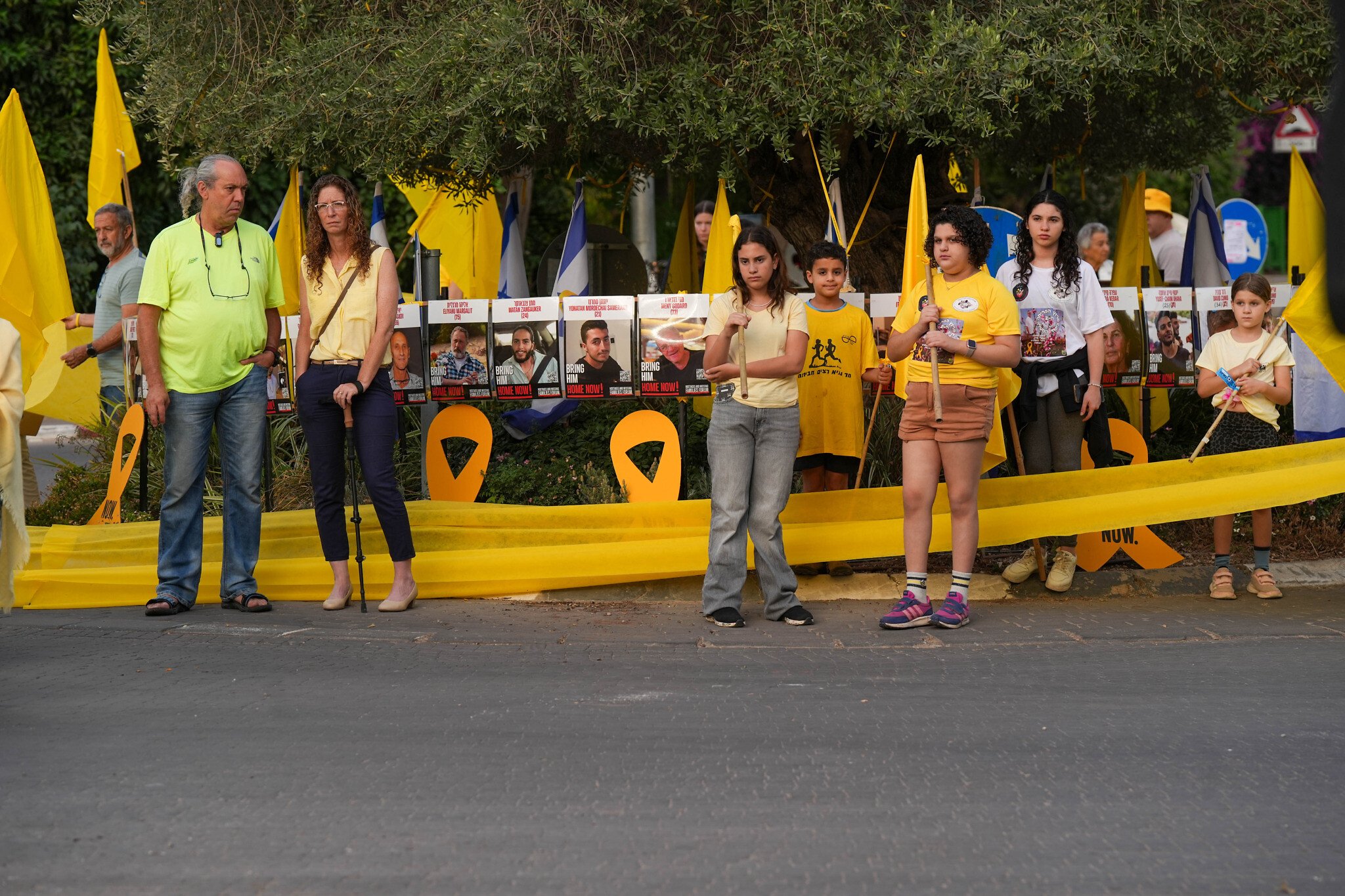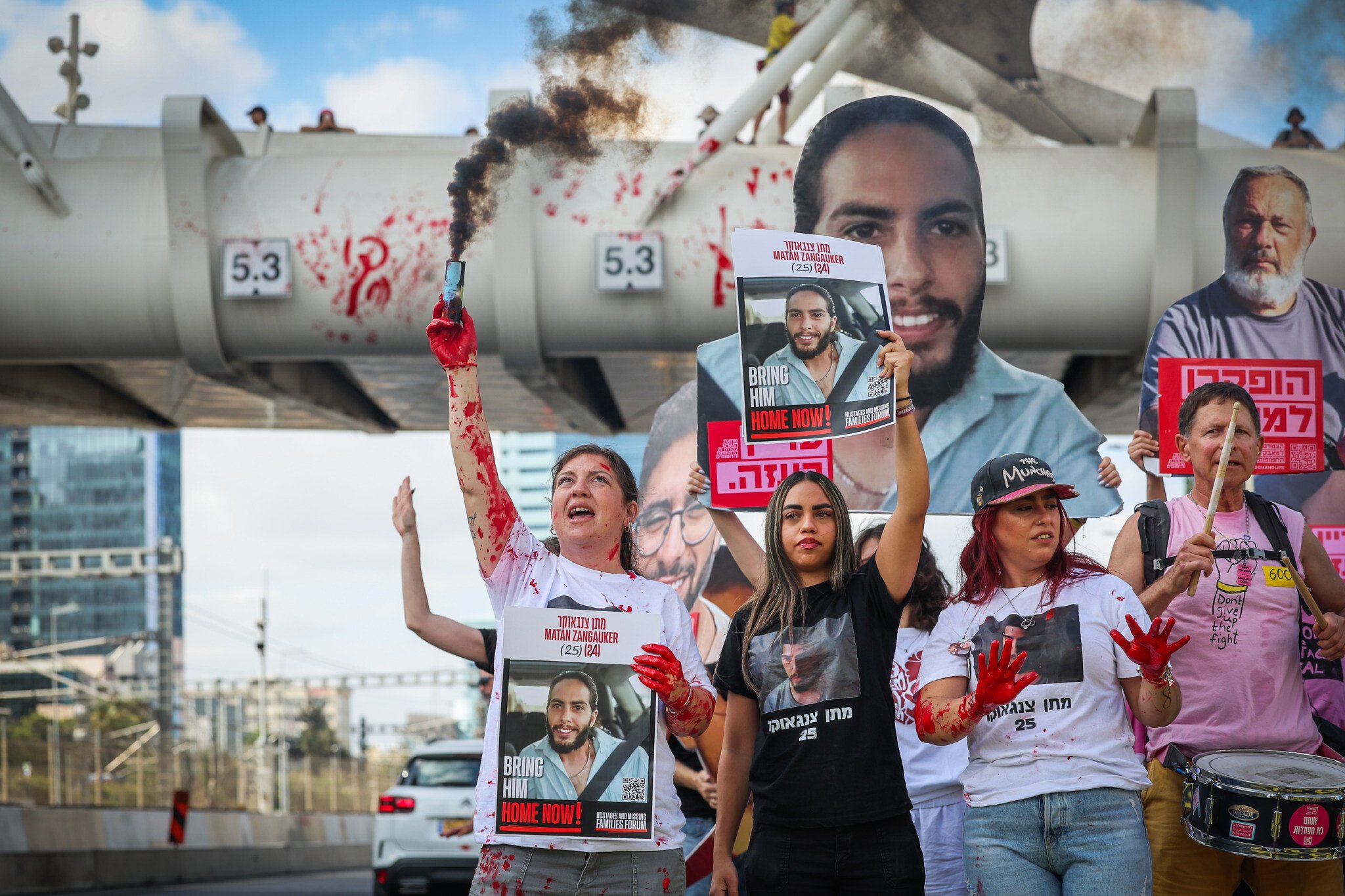


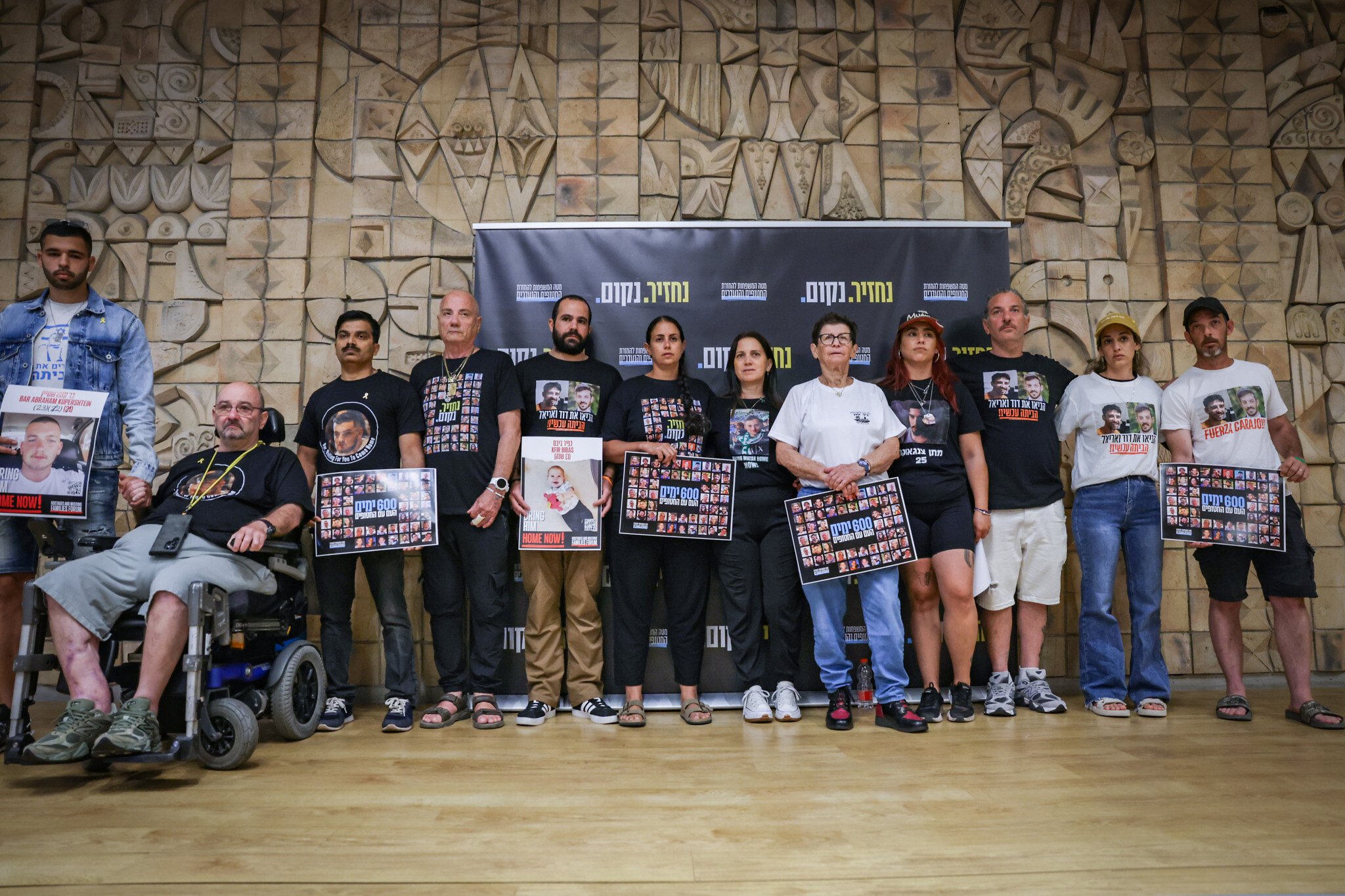
Israel on Wednesday marked 600 days since the Hamas terror group’s October 7, 2023, attack, with families of those still held hostage in Gaza drawing attention to the captives’ ongoing plight, and pleading for their release.
Family members of hostages gathered at the Hostages Forum offices in Tel Aviv. Anat Angrest, whose son Matan Angrest was kidnapped by Hamas from a burning IDF tank at the Nahal Oz military base during the battle, directed her angry comments at the Israeli government.
“I want to turn here to every mother and father: Imagine standing next to me, giving everything for the state and the homeland, but being abandoned and forgotten,” she said. “It can unfortunately happen to every one of us.”
Angrest said she believes the number of people who refuse to serve in the army will grow, as will the number of those who no longer want to hold Israeli citizenship.
“This is not just my war, or the war of the Angrest family, or of 58 families,” she said.
Her words were echoed by Leah Goldin, whose son Hadar Goldin was killed in battle in Gaza in 2014 and whose body is still held by Hamas.
“Hadar was abandoned,” said his mother. “It was seen as a private matter of the Goldin family. Now there are 58 more Hadar Goldins in Gaza. This is a national issue.”
Released hostage Arbel Yehoud, 29, who was kept alone for the entirety of her 482 days of captivity, was joined by Eitan Cunio and Lucas Cunio, the brothers of hostages David Cunio and Ariel Cunio, Yehoud’s boyfriend.
Alongside them was released hostage Yarden Bibas, the longtime close friend of David Cunio.
Bibas was freed in February, but his wife, Shiri, and their two young sons, Ariel and Kfir, were murdered in captivity. The Bibases, Cunios and Yehouds are all members of Kibbutz Nir Oz, where they were taken captive from their homes on October 7.
“I was there. I know exactly what the hostages are going through,” said Yehoud, naming the hostages from Nir Oz who are still held captive. “I call on the Israeli nation and its leader, Prime Minister Benjamin Netanyahu: Trump opened the door, Edan [Alexander] went out, and this door has to stay open until all come home.”
Ofri Bibas, sister of freed captive Yarden Bibas, held up a picture of her nephew Kfir, who was 10 months old when he was killed in captivity.
She said the family screamed for months when her brother, sister-in-law, and nephews were taken captive.
“We screamed and tried to believe [that the government would help]. The help never came,” she said.
“Prime minister, you failed on that day and have failed for the last 600 days. You didn’t take responsibility and won’t investigate what happened,” Bibas added, referring to the government’s refusal to establish a state commission of inquiry.
“So many soldiers gave their lives. Wars have to end with diplomacy,” she said. “How many more soldiers and hostages have to die for this to end?”
Another veteran member of Kibbutz Nir Oz, 85-year-old Yocheved Lifschitz, whose husband, Oded Lifschitz, was killed in captivity, said that the Israeli government didn’t appear to rush to bring her and her neighbor, Nurit Cooper, back home when their Hamas captors offered to release the two women on October 23, 2023.
She called that moment the second embarrassment of the nation, following the October 7 disaster.
“People told me that there seemed to be some ambivalence on Israel’s part,” said Lifschitz.
Other hostages’ family members came onstage, including former hostage Ilana Gritzewsky, whose boyfriend, Matan Zangauker, is still in captivity; rescued hostage Luis Har; and Tal Kuperstein, father of hostage Bar Kuperstein.
“How is it that you haven’t brought Bar home?” asked Barak Oz, Bar Kuperstein’s cousin.
Oz sighed heavily, describing a dream he had that Bar came home.
“I felt him, I smelled him,” he said. “I want to cry from that kind of happiness.”
He hugged Tal Kuperstein, who cried onstage.
Meanwhile, protests across the country demanded a hostage deal, and sometimes new elections.
Beginning at 6:29 a.m., the hour when Hamas launched its invasion, Israelis gathered at different locations around the country in the formation of the yellow hostage symbol.
Demonstrators gathered in the predawn hours in the shallow waters of the Mediterranean Sea near the US Embassy branch in Tel Aviv, with the numbers 58 and 600 and the words “Save Them Now” spelled out in the sand.
In Tel Aviv’s so-called Hostages Square, other protesters, wearing yellow shirts and holding yellow balloons, waited for the moment when the digital board counting the days, hours, minutes and seconds of captivity switched from 599 to 600.
As the counter turned to 600, the circle released their balloons and called out, “Bring them home now!”
People also gathered in a yellow formation on a grassy public knoll in Zichron Yaakov, tied a massive yellow hostage ribbon around Jaffa’s clocktower, held yellow balloons in Ramat Aviv, and created a human yellow ribbon around intersections in Hadera, Holon, Kfar Saba, Nahalal Junction, Modiin and Emek Hefer.
A human chain formed along the main road from Na’an to Sitriya in the north, while in Jerusalem, residents gathered together at the park near the home of Strategic Affairs Minister Ron Dermer, who has been heading Israel’s hostage negotiation team, for the morning service that included prayers for the new month.
Critics noted that no hostages, except for US-Israeli national Edan Alexander, whose release was arranged by Hamas and the US without Israeli involvement, have been freed since Dermer took on the role over 100 days ago.
At 7:10 a.m., a group of bereaved parents stood in a park across from the Tel Aviv high-rise home of Knesset Speaker Amir Ohana, speaking into a microphone, asking the Likud lawmaker to go out to his balcony and look at them.
“Go out on your porch and look at us,” said one father. “Our children were killed and assaulted on October 7. For 600 days, you have turned away from us. We won’t let this break us, and we’ll continue to fight.”
The bereaved parents said they are working on a proposal for legislation calling for new elections because the government is refusing to create a state commission of inquiry into the failures surrounding the attack.
Protesters also blocked Tel Aviv’s Ayalon Highway in a joint call for an agreement to secure the release of the hostages held in Gaza and for elections to be held.
“Hostages home, the government [go] home,” they painted on the road.
Terror groups in the Gaza Strip are holding 58 hostages, including 57 of the 251 abducted by Hamas-led terrorists on October 7, 2023.
They include the bodies of at least 35 confirmed dead by the IDF, and 20 hostages who are believed to be alive. There are grave concerns for the well-being of three others, Israeli officials have said.
Hamas released 30 hostages — 20 Israeli civilians, five soldiers, and five Thai nationals — and the bodies of eight slain Israeli captives during a ceasefire between January and March, and one additional hostage, a dual American-Israeli citizen, in May as a “gesture” to the United States.
The terror group had already freed 105 civilians during a weeklong truce in late November 2023, and four hostages were released before that in the early weeks of the war.
In exchange, Israel has freed some 2,000 jailed Palestinian terrorists, security prisoners, and Gazan terror suspects detained during the war.
Eight hostages have been rescued from captivity by troops alive, and the bodies of 41 have been recovered, including three mistakenly killed by the Israeli military as they tried to escape their captors, and the body of a soldier who was killed in 2014.
The body of another soldier killed in 2014 is still being held by Hamas and is counted among the 58 hostages.

